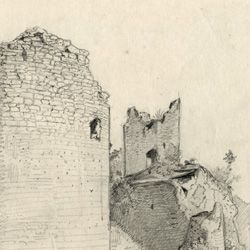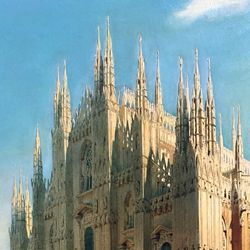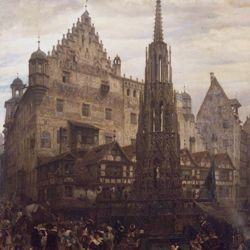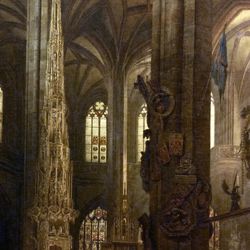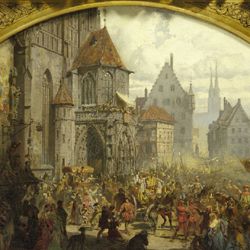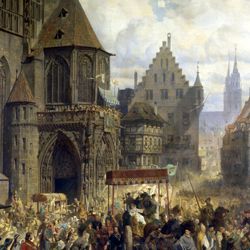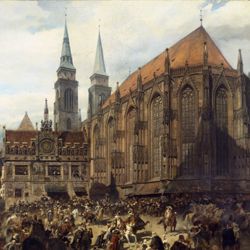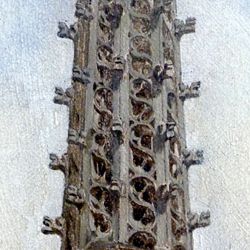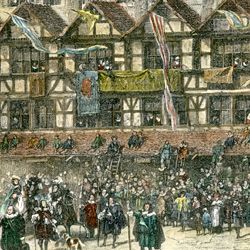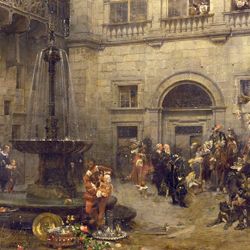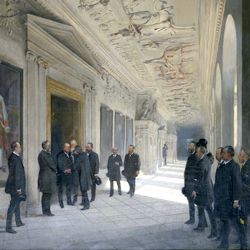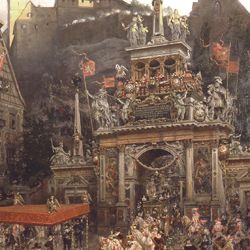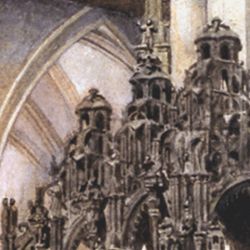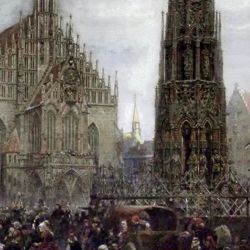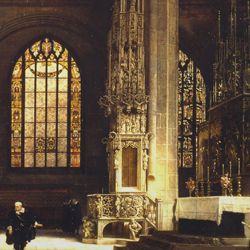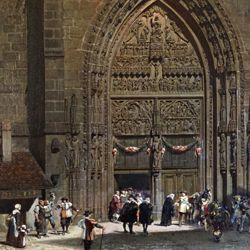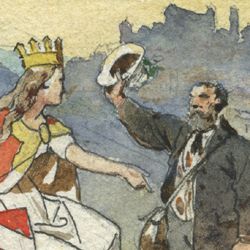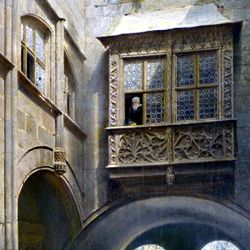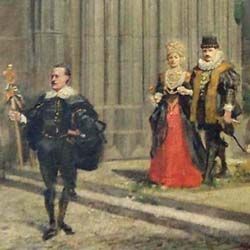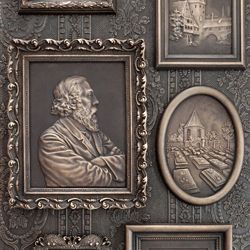Johann Paul d.Ä.
Ritter
copperplate engraver, architectural painter, etcher
born Nürnberg, 04. Mar 1829
died Nürnberg, 27. Nov 1907
Son of Johann Jakob, comb maker; grandson of Christoph Wilhelm, redsmith; brother of Lorenz, painter. Unmarried. At the age of four years he lost his hearing due to scarlet fever and as a consequence by the time the ability to speak as well. After attending the deaf and mute school he studied nine years with Karl Alexander Heideloff at the Nuremberg Polytechnic. In the 1850s he worked together with his brother Lorenz temporarily in Berlin and Stuttgart as a draftsman and etcher. After returning to Nuremberg both brothers founded a school for copperplate engraving where they also carried out orders for publishing houses in other cities. In the 1870s they went on study trips to Denmark, France, Italy, Austria and Prague. During this time he turned increasing attention to painting. Doubtlessly Paul Ritter was the grand seigneur of architectural painting in Nuremberg in the second half of the 19th century having a profound knowledge as well of the history of the City as of costumes. These were the basis of his many historic paintings of the City´s history. His main oeuvre and probably best known painting is the „Einbringung der Reichskleinodien am 22.3.1424 in Nürnberg“ (Transfer of the Imperial Regalia to Nuremberg on 22nd March 1424). The painting, measuring 3,55 x 3,77 m was revealed in solemn ceremony on the occasion of the birthday of Emperor Wilhelm I. on 22nd March1883 in the stairwell of the Nuremberg City Hall. The contract between the city and the painter for a fee of 9000 Marks was concluded on 23rd March 1881.The painting is now as a loan in the Chamber of Industry and Commerce (at present in the Fembo-Haus). Apart from that, Ritter created other paintings on historical events like e.g. the Triumphal arch for Emperor Matthias in 1612, the Nuremberg assay office on the occasion of the solemn entry of Gustav Adolf in Nuremberg, the City Hall courtyard during the peace banquet in 1649, a knights´ tournament in the Main Market and a patrician wedding ceremony in St.Lorenz-Church in the costumes of the 17th century. An unfinished painting in a private collection shows that he for his oil paintings made meticulously exact preliminary sketches on the canvas. Apart from that he created contemporary architectural views. Paul Ritter painted mainly in oil and occasionally watercolors as well. Already during his lifetime he obtained extraordinarily high prices for his works, he sold the “Triumphal arch” at the price of 6000 gold marks, an oil painting “Courtyard of the Old Reichspost“ he sold shortly before he died on 24. July 1907 at 1200 gold marks. He had a teaching assignment at the Nuremberg school for Arts and Crafts from 1885 to 1889, in 1888 he was appointed Royal Professor. Due to his profound historic knowledge he also was a highly appreciated designer of historic series of pewter figures for Ernst and Wilhelm Heinrichsen. One of his last paintings was the altar painting for the chapel of the Institute for the Deaf and Mute, an institution which he kept close contacts with over decades. Because of his impairment he mostly lived with his brother Lorenz´s family He was an honorary member of the Artists´ Associations, a Member of the Künstlerklause (Artists´hermitage club). (...) quoted from Nürnberger Künstlerlexikon, ed. by Manfred Grieb
Style: Late Romanticism
